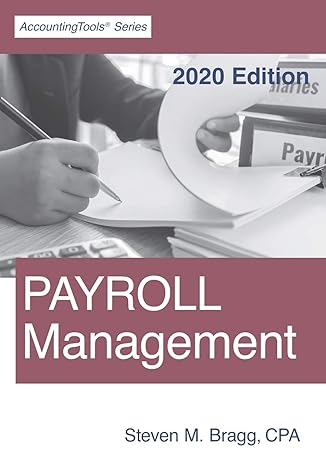Answered step by step
Verified Expert Solution
Question
1 Approved Answer
Jetson Co. sold 20,000 units of its only product and incurred a $50,000 loss (ignoring taxes) for the current year as shown here. During a
Jetson Co. sold 20,000 units of its only product and incurred a $50,000 loss (ignoring taxes) for the current year as shown here. During a planning session for year 2012 activities, the production manager notes that variable costs can be reduced 50% by installing a machine that automates several operations. To obtain these savings, the company must increase its annual fixed costs by $150,000. The maximum output capacity of the company is 40,000 units per year.Contribution Margin Income StatementFor Year Ended December 31, 2011Sales 750000 Variable costs 600000 Contribution margin 150000 Fixed costs 200000 Net loss (50000). Prepare a forecasted contribution margin income statement for 2012 that shows the expected results with the machine installed. Assume that the unit sales price and the number of units sold (20,900 units) will not change, and no income taxes will be due. I am having trouble computing the variable cost. Can someone please help me? I tried to compute 20900*19.20 and 20900*19.19 but it isn't the correct answer. Everytime I ask this question this is the answer I get. This seems reasonable to me: First, you are looking for an after tax income (or profit) of $140, 000 assuming a tax-rate of 30%. Hence, this means you would need to earn a pre-tax income of X * (100%-30%) = $140,000, or X = $140,000 / .7 = $200,000. Second, the original unit cost can be determined by solving the equation, Sales - (Fixed costs + Variable costs) = -$50,000 or, $750,000 -(200,000 + (U x 20,000)) = -$50,000, where U = unit cost. Solving for U, $750,000 - $200,000 - 20,000U =-$50,000 -20,000U = -600,000, U = $30 / unit Third, The variable unit cost can be reduced by 50%, hence the new unit cost = $30 x 50% = $15. So, here is what we know: if we invest another $150,000 and automate more operations then our new unit cost will be $15/unit. This means our new fixed costs will increase by the cost of the new machine: new fixed costs = old fixed cost + new machine cost = $200,000 + $150,000 = $300,000. Now we put it all together, For 2012, Profit = Sales -(New Fixed Costs + (Number of Units x Unit cost)), or $200,000 = Sales - ($350,000 + (40,000 x $15)), or $200,000 = Sales - ($350,000 + $600,000), or Sales = $200,000 + $950,000 Sales = $1,150,000 Summarizing: We can make an after-tax profit of $140,000, if we generate a pre-tax profit of $200,000 at a 30% tax rate, by selling $1,150,000 at a cost of $950,000. Our cost of $950,000 includes our fixed costs of $350,000 plus a variable cost of $600,000. Our variable cost was calculated by reducing our old variable cost by 50% and producing the maximum number of units
Step by Step Solution
There are 3 Steps involved in it
Step: 1

Get Instant Access to Expert-Tailored Solutions
See step-by-step solutions with expert insights and AI powered tools for academic success
Step: 2

Step: 3

Ace Your Homework with AI
Get the answers you need in no time with our AI-driven, step-by-step assistance
Get Started


